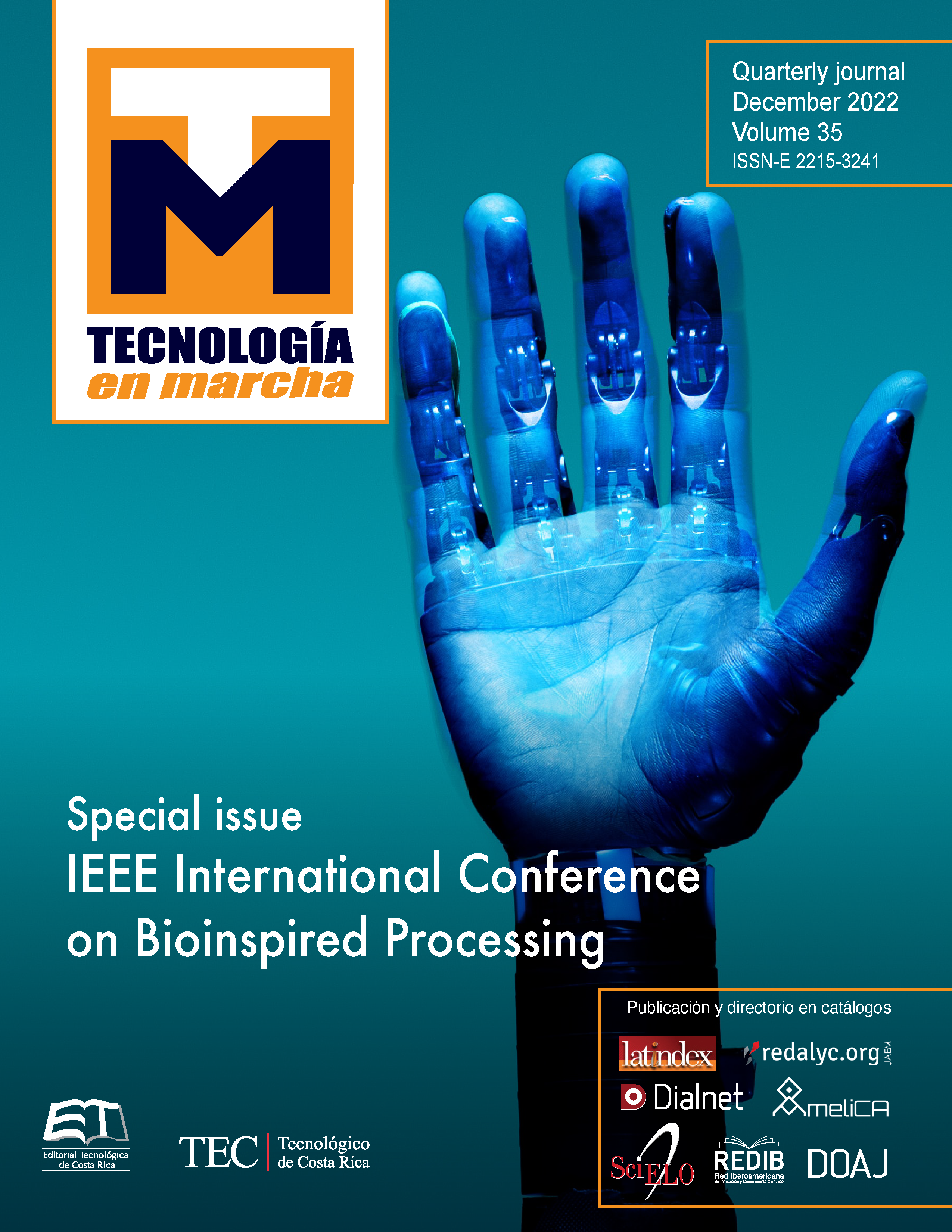Acelerando aprendizaje de máquina en el Edge con computación aproximada en FPGAs
Contenido principal del artículo
Resumen
La inferencia en algoritmos complejos de aprendizaje automático (ML, por sus siglas en inglés) en edge computing está tomando importancia para desvincular la funcionalidad de un sistema de la nube. Sin embargo, los modelos de ML incrementan en complejidad más rápido que los recursos de hardware disponibles. Esta investigación tiene como objetivo acelerar el aprendizaje por automático al delegar el cálculo computacional a FPGAs de baja gama y usar computación aproximada para optimizar el uso de los recursos aprovechando la naturaleza inexacta de los modelos de aprendizaje automático. En este artículo, proponemos un diseño de un elemento de procesamiento genérico de multiplicación-suma de matrices, parametrizado en el tipo de dato, tamaño de la matriz y ancho del dato. Evaluamos el comportamiento del consumo de recursos y del error mientras variamos el tamaño de la matriz y el ancho del dato dato un tipo de datos de punto fijo. Determinamos que el error escala con el tamaño de la matriz pero que puede ser compensado al incrementar el ancho del dato, representando un compromiso entre el ancho del dato y el tamaño de la matriz con respecto al error.
Detalles del artículo

Esta obra está bajo una licencia internacional Creative Commons Atribución-NoComercial-SinDerivadas 4.0.
Los autores conservan los derechos de autor y ceden a la revista el derecho de la primera publicación y pueda editarlo, reproducirlo, distribuirlo, exhibirlo y comunicarlo en el país y en el extranjero mediante medios impresos y electrónicos. Asimismo, asumen el compromiso sobre cualquier litigio o reclamación relacionada con derechos de propiedad intelectual, exonerando de responsabilidad a la Editorial Tecnológica de Costa Rica. Además, se establece que los autores pueden realizar otros acuerdos contractuales independientes y adicionales para la distribución no exclusiva de la versión del artículo publicado en esta revista (p. ej., incluirlo en un repositorio institucional o publicarlo en un libro) siempre que indiquen claramente que el trabajo se publicó por primera vez en esta revista.
Citas
C. J. Wu, D. Brooks, K. Chen, D. Chen, et al., “Machine learning at facebook: Understanding inference at the edge” Proceedings 25th IEEE International Symposium on High Performance Computer Architecture, HPCA 2019, pp. 331–344, 2019. https://doi.org/10.1109/HPCA.2019.00048
B. C. Schafer and Z. Wang, “High-Level Synthesis Design Space Exploration: Past, Present, and Future” in IEEE Transactions on Computer-Aided Design of Integrated Circuits and Systems, vol. 39, no. 10, pp. 2628-2639, Oct. 2020, https://doi.org/10.1109/TCAD.2019.2943570.
Z. Wang and B. C. Schafer, “Learning from the Past: Efficient High-Level Synthesis Design Space Exploration for FPGAs” in ACM Transactions on Design Automation of Electronic Systems, vol. 27, no. 4, Jul. 2022, https://doi.org/10.1145/3495531.
T. Liang, J. Glossner, L. Wang, S. Shi and X. Zhang, “Pruning and quantization for deep neural network acceleration: A survey”, Neurocomputing, vol. 461, pp. 370-403, 2021. https://doi.org/10.1016/j.neucom.2021.07.045
T. González, J. Castro-Godínez. “Improving Performance of Error-Tolerant Applications: A Case Study of Approximations on an Off-the-Shelf Neural Accelerator” in V Jornadas Costarricenses de Investigación en Computación e Informática (JoCICI 2021), Virtual Event, Oct. 2021.
Intel, “Intel® Architecture Instruction Set Extensions and Future Features”, Intel Corporation, May 2021. [Online]. Available: https://software.intel.com/content/www/us/en/develop/download/intel-architecture-instruction-set-extensions-programming-reference.html
NVIDIA Corporation, “NVIDIA TESLA V100 GPU ARCHITECTURE” 2017. [Online]. Available: https://images.nvidia.com/content/volta-architecture/pdf/volta-architecture-whitepaper.pdf
Andrew Lavin and Scott Gray. 2016. Fast algorithms for convolutional neural networks. In Proc. of the IEEE Conference on Computer Vision and Pattern Recognition. 4013–4021. https://doi.org/10.1109/CVPR.2016.435
Salazar-Villalobos, Eduardo, and Leon-Vega, Luis G. (2022). Flexible Accelerator Library: Approximate Matrix Accelerator (v1.0.0). Zenodo. https://doi.org/10.5281/zenodo.6272004

